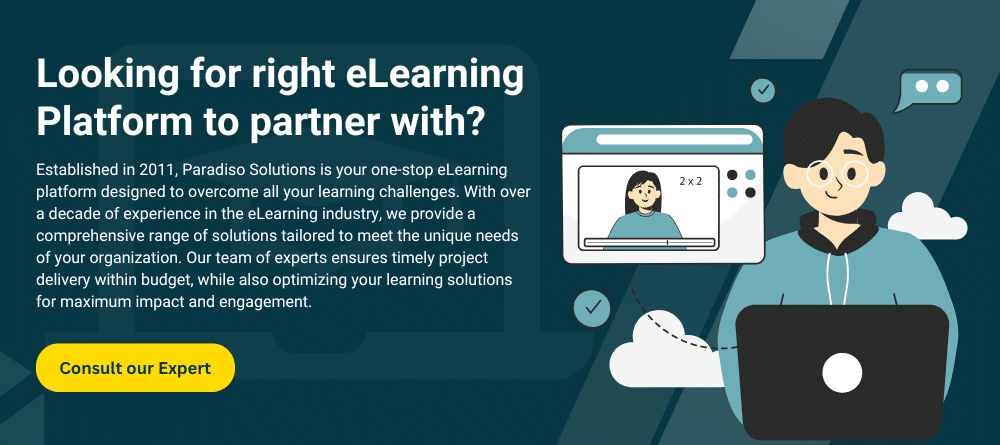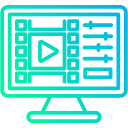Microlearning is changing how we approach eLearning and course development. By breaking down complex topics into small, digestible pieces, microlearning makes it easier for learners to absorb and retain information. This blog will explore best practices for creating engaging and effective microlearning experiences as part of comprehensive eLearning course development.

Microlearning Best Practices and its Examples
What is Microlearning?
Microlearning delivers content in bite-sized lessons, focusing on one specific topic or skill. These short, focused sessions are perfect for fitting into a busy schedule and can be accessed through various digital platforms, making learning flexible and convenient.
How can Microlearning Help your Organization
The whole concept of microlearning is based on the Hermann Ebbinghaus forgetting curve. In the mid-1880s, Hermann Ebbinghaus introduced concepts like the learning and forgetting curves, highlighting how memory fluctuates over time. His studies revealed that memory retention depends on the subject matter and the learning methods.
Microlearning leverages these insights by offering short, focused learning sessions that align with how our brains naturally retain information. By delivering content in small, manageable chunks, microlearning helps employees better retain knowledge and recall it when needed. This method is particularly effective for on-the-job training as it allows employees to learn without significant disruptions to their daily tasks, ensuring that the information they acquire is relevant and immediately applicable to their workflow.
Understanding Microlearning Content
Microlearning content delivers information in concise, focused segments that fit a learner’s busy schedule. Instead of lengthy training sessions, microlearning offers quick, easily digestible pieces of content such as brief videos, quizzes, infographics, or short articles. This approach helps learners absorb and retain essential information more effectively by concentrating on one specific topic or skill at a time.
A major advantage of microlearning is its practicality. Employees can quickly access and complete these short learning modules during breaks or between tasks, making it easier to fit learning into their daily routines. This method saves time and allows employees to immediately apply what they’ve learned, which can reinforce their knowledge and improve their job performance.
Challenges of Microlearning Courses
Narrow Focus
Microlearning is tailored to present information in small, easily digestible pieces. This makes it challenging to cover complex topics that require thorough exploration and a deeper understanding.
Disjointed Learning
Without careful planning, microlearning can result in disjointed learning experiences. It’s essential to ensure all microlearning units are well-integrated to provide a cohesive and comprehensive understanding of the subject matter.
Preparation Time
Developing effective microlearning content can be a lengthy process. It involves meticulous planning, reworking existing materials, and focusing on instructional design to make the content engaging and effective.
Engagement Challenges
Although microlearning fits well into busy schedules, it might lead to reduced learner commitment. Some learners might perceive the brief lessons as less valuable and lose interest if they don’t see immediate benefits.
Personalization Difficulties
Personalizing microlearning content for a diverse audience can be difficult. Creating multiple versions of microlearning modules to meet different learners’ needs requires considerable time and resources.
Inadequate for Complex Training
Microlearning might only be suitable for some fields that require extensive training. For example, healthcare professionals often need detailed discussions and hands-on practice, which cannot be fully addressed through microlearning alone.
Progress Tracking
Keeping track of learner progress in microlearning can be more challenging compared to traditional methods. Ensuring learners complete all modules and retain the information requires additional effort.
Risk of Content Overload
The ease of creating microlearning modules can lead to an excessive amount of content. It’s important to avoid overwhelming learners with too many sessions, as this can reduce the overall effectiveness of the training.
Here are Some Best Practices of Microlearning
The Fundamentals of Microlearning
To make the most of microlearning, starting with the basic module should cover a single learning objective, making the content easy to understand and remember. This focused approach prevents information overload and helps learners stay on track.
Harnessing Storytelling for Engagement
Storytelling is a powerful way to make learning more engaging. Turning dry facts into compelling narratives can capture learners’ attention and make the material more relatable. Stories create an emotional connection, making the content more memorable and enjoyable.
Focusing on Conciseness and Precision
In microlearning, being concise is compulsory. Keep your content short and concise, focusing on the core message. Avoid unnecessary details and jargon. Each module should be straightforward, allowing learners to quickly grasp and apply the information.
Enhancing Learning with Visuals
Visuals can make your microlearning content more engaging and easier to understand. Use images, infographics, and videos to break up text and illustrate concepts. Visual elements help learners process and remember information more effectively.
Incorporating Gamification for Fun
Adding gamification elements like quizzes, badges, and leaderboards can make learning more enjoyable. Gamification motivates learners by introducing a sense of competition and achievement, encouraging active participation, and making the learning experience fun.
The Importance of Interactive Elements
Interactive elements like drag-and-drop activities, simulations, and clickable graphics engage learners and enhance understanding. Interactivity encourages learners to participate actively, leading to better retention and application of knowledge.
Designing with a Mobile-First Approach
Designing your microlearning modules to be mobile-friendly is essential. Ensure that your content works seamlessly on any device, allowing learners to access training materials whenever and wherever they want. This flexibility makes learning more accessible and convenient.
Using Microlearning Authoring Tools
Microlearning authoring tools can streamline the creation process. These tools offer templates, pre-built interactions, and multimedia support, making it easier to develop engaging content quickly. They help maintain consistency and quality across your modules.
The Process of Testing, Iterating, and Improving
Creating practical microlearning modules is an ongoing process. Start by testing your modules with a small group of learners and gather their feedback. Use this feedback to make improvements and iterate. This continuous cycle of testing and refining ensures that your content stays relevant and practical.
Example of Microlearning Courses
Training on New Products
Keeping your staff informed about new or updated products is crucial, especially if you have branches worldwide. Creating a product training video ensures that all new and existing employees receive consistent information about your products or services. This method remains one of the most practical and traditional learning solutions.
Welcoming New Employees
After hiring a new employee, the next challenge is to ensure they feel confident about their decision to join your company. One effective way to retain new hires is by providing them with an interactive microlearning onboarding course. This helps them feel like part of the team even before their first day.
Health and Safety Essentials
Microlearning is an excellent tool for addressing or preventing potential issues within your company. By offering regular health and safety training sessions, you can ensure a healthy working environment where employees can thrive.
Sales Techniques and Guidelines
Training your staff on what they can and cannot say to customers is crucial. Mobile-based microlearning allows you to send operational guides and lessons in short bursts, accessible anytime, anywhere. This flexibility enables employees to learn during their lunch breaks or between busy schedules.
Job Refresher Courses
Periodic refresher courses are beneficial for employees. Spaced repetition of essential job-related information helps them retain knowledge more effectively and promotes long-term memory.
Microlearning with Paradiso Solutions
To take your microlearning initiatives to the next level, consider leveraging Paradiso, an AI-powered training platform that offers robust tools to make your courses more effective and engaging. Paradiso Solution’s course authoring tool allows you to create dynamic and interactive content easily. With its media creation tool, you can incorporate rich visuals and multimedia elements that enhance the learning experience.
With Paradiso Solutions, you can ensure that your microlearning modules are always up-to-date and visually appealing. The platform supports various multimedia formats, enabling you to create content that is not only informative but also engaging and fun. Whether you’re adding videos, infographics, or interactive elements, Paradiso makes it simple to design courses that capture learners’ attention and aid in better retention.
Incorporating Paradiso Solutions into your eLearning toolkit means you have a powerful ally in creating high-quality, impactful microlearning experiences.












